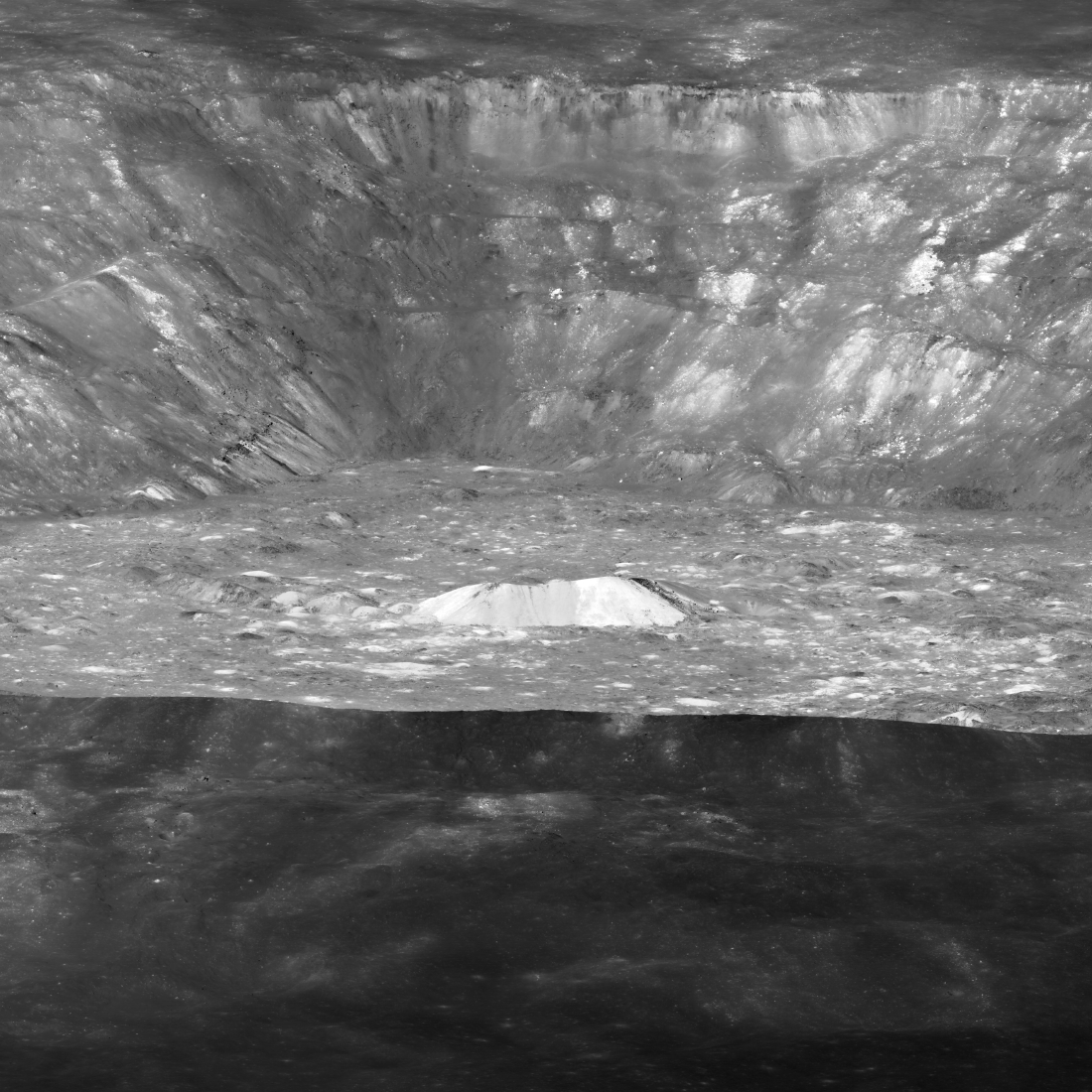
Albedo (brightness) differences on the Moon are predominantly due to varying abundances of iron and titanium, and space weathering processes. Other physical properties of the rock also have important effects on albedo, such as whether it is crystalline or glass. Glass forms when molten rock cools so rapidly (quenches) that it does not have time to crystallize into minerals. Such rapid cooling is common in explosive volcanic eruptions and impact events. Around and in Aristarchus crater, both of these processes are important.
Adjacent to Aristarchus crater is the Aristarchus plateau, one of the largest volcanic centers on the Moon. Here we find one of the largest rilles, a massive pyroclastic deposit, and the source of extensive flood basalts. These volcanic materials are considered relatively young (for the Moon) – 1.5 to 2.5 billion years. The pyroclastic deposit formed when magma was explosively ejected from the vent and broke into small droplets quenched as glass in the cold vacuum of space as they fell back to the surface. Due to their high glass content, the pyroclastic deposits are distinctly low in albedo (relatively dark), providing a dark background for the bright Aristarchus crater. Within the crater, some of these pyroclastic deposits may be visible as the darkest areas on the far wall, and glassy impact melt is moderately lower in reflectance than the bright, rocky materials exposed on areas of the crater floor and walls.
Related Featured Images
Striated Blocks in Aristarchus Crater
Published by Mark Robinson on 1 December 2022